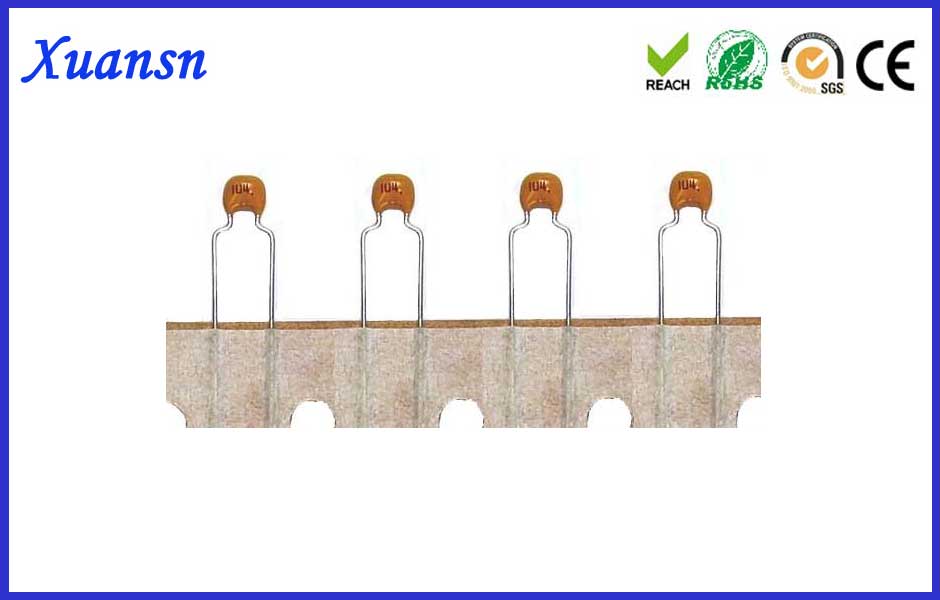Monolithic capacitor is actually capacitors made up of multilayer ceramics, which have the characteristics of small volume and long life, and relatively high safety.
Monolithic capacitor is widely used in electronic precision instruments. Various small electronic devices are used for resonance, coupling, filtering, and bypassing.
The basic structure of a simple parallel plate capacitor consists of an insulating intermediate dielectric layer plus two conductive metal electrodes. Therefore, the structure of the multilayer chip ceramic capacitor mainly includes three parts: a ceramic medium, a metal inner electrode, and a metal outer electrode. The multilayer chip ceramic capacitor is a multi-layered structure, which is simply a parallel body of a plurality of simple parallel plate capacitors.

Monolithic capacitor classification
1. Temperature compensated NPO dielectric
This capacitor has the most stable electrical performance and basically does not change with temperature, voltage and time. It is an ultra-stable, low-loss capacitor material type. It is suitable for high frequency, ultra high frequency and even high requirements for stability and reliability. In high frequency circuits.
2. High dielectric constant X7R dielectric
Since X7R is a strong dielectric, it can produce capacitors with a larger capacity than NPO media. The performance of this capacitor is relatively stable. The characteristic performance change is not significant with the change of temperature and voltage time. It is a type of stable capacitor material, which is used in the high isolation, coupling, loop, filter circuit and high reliability requirements. In the frequency circuit.
3. For semiconductor Y5V dielectric
This type of capacitor has a high dielectric constant and is commonly used to produce large-capacity capacitor products with large specific capacitance and high nominal capacity. However, its capacity stability is worse than that of X7R. The capacity and loss are sensitive to test conditions such as temperature and voltage. It is mainly used in the oscillation, coupling, filtering and bypass circuits in the electronic whole machine.
Monolithic capacitors are larger than general ceramic capacitors (10pF~10μF), and have wide capacitance, small size, high reliability, stable capacitance, high temperature resistance, good insulation and low cost, so they are widely used. Monolithic capacitors not only replace mica capacitors and paper capacitors, but also replace some tantalum capacitors, which are widely used in small and ultra-small electronic devices such as LCD watches and micro instruments.
Characteristics and functions of monolithic capacitors
Characteristics
Good temperature characteristics and good frequency characteristics. Generally, as the frequency increases, the capacitance decreases, and the monolithic capacitance decreases less and the capacity is relatively stable.
Effect
1, energy storage exchange
This is the most basic function of the monolithic capacitor, mainly through its charge and discharge process to generate and apply a power. This is mainly based on large-capacity type II monolithic capacitors, and in some cases can even replace small aluminum electrolytic capacitors and tantalum electrolytic capacitors.
2, through the intersection (bypass and coupling)
Since the monolithic capacitor is not a conducting body, it shows the phenomenon of charging at both ends through the regular steering of the alternating current. Therefore, in the circuit, it can be connected in parallel with other components to allow the alternating current to pass, and the direct current is blocked. , plays the role of bypass.
In the AC circuit, the monolithic capacitor charges and discharges in accordance with the polarity change of the input signal, so that the circuit connected to both ends of the monolithic capacitor exhibits a conductive state and functions as a coupling.
In general, the monolithic capacitor associated with the amplifier or op amp input is a coupled monolithic capacitor; the monolithic capacitor associated with the amplifier or op amp emitter is a bypass monolithic capacitor.
Both are mainly type II monolithic capacitors, especially 0.1uF.
3, frequency discrimination filter
In an AC circuit, for a multi-frequency mixed signal, we can separate it with a monolithic capacitor. In general, we can filter most of the low-frequency signal with a monolithic capacitor of reasonable capacitance. This is mainly based on high frequency or ultra high frequency monolithic capacitors.
4, the suppression of surge voltage
Since the monolithic capacitor is an energy storage component, it can remove those transient surge signals in the circuit and absorb the excess energy generated by the voltage fluctuations in the circuit. The filtering is mainly based on high frequency products.




